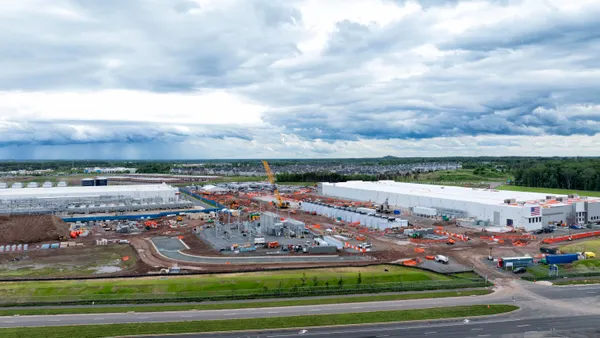Dive Brief:
- Most enterprises are leaning on their mainframes to run generative AI workloads, according to a Kyndryl report published last week. The IT services provider commissioned Coleman Parkes Research to survey 500 business and technology executives for its second annual mainframe modernization report.
- Nearly 9 in 10 respondents plan to deploy generative AI in mainframe environments as part of a hybrid strategy that leverages public cloud while modernizing on-prem infrastructure. While 86% of respondents said mainframes remain essential, 96% plan to migrate a portion of their applications to cloud.
- “Mainframes continue to occupy a central role in the hybrid world and are evolving to serve new use cases, with AI and security increasingly influencing modernization plans,” Petra Goude, global practice leader for core enterprise and zCloud at Kyndryl, said in a release accompanying the report.
Dive Insight:
Large language models thrive in massive hyperscaler data centers, where AI-optimized chips and compute resources are relatively easy to find. But many organizations are finding a home for smaller, purpose-built generative AI tools on-prem, aboard mainframes that house core data and business applications.
To ease on-prem AI adoption, IBM rolled out high-capacity mainframe processors for its zSystems and LinuxOne clients last month. Dell is also banking on enterprises running AI on-prem as fuel for its GPU-infused server and workstation business, the company said earlier this month.
The option of bringing the model to the data rather than sending the data to cloud is a potential solution to AI security concerns, which half of the survey’s respondents cited as one of the main motivators for mainframe modernization.
“You can't do machine learning and cool AI stuff without good data,” Brian Klingbeil, chief strategy officer at IT services company Ensono, told CIO Dive. “And if you have a mainframe, what kind of data is on that mainframe? The answer almost 100% of the time is: The most important data to my company — and it's there in spades.”
Despite a rush to cloud for many customer-facing applications, organizations report running 56% of critical workloads on a mainframe, according to the Kyndryl survey. More than half of respondents said mainframe usage increased this year and 49% expect that trend to continue.
“Cloud is great for systems of customer engagement, like a mobile check-in app for an airline,” Klingbeil said. “But mainframes tend to be systems of record for airline flight scheduling, insurance claims processing, ATM machines, stock ledgers and large retailers.”
Talent woes continue to plague mainframe modernization efforts, as experienced practitioners retire and are replaced by technologists primarily trained in the cloud. More than one-quarter of respondents expressed concern that their organization may lack the necessary mainframe modernization skills and slightly fewer said they’ve already encountered talent shortfalls, Kyndryl found.
Lack of familiarity with mainframes can also be an executive-level issue, Klingbeil said.
“Some younger CIOs, when they take over, don't really realize that it supports massive revenue streams, even if it’s a big line item. If you do the math and look at dollar-for-dollar revenue, mainframes are relatively efficient.”















